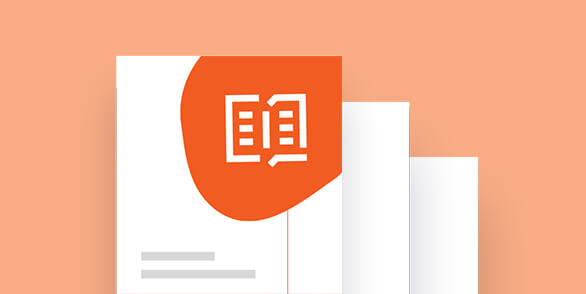In the wake of the COVID-19 pandemic, businesses can no longer afford to ignore payroll when searching for new ways of reducing costs and boosting productivity. According to recent research by CIO Dive, “With COVID-19, 66 per cent of decision-makers turned their focus to cost optimisation, while 34 per cent prioritised operational efficiencies.”[1]
Perhaps it’s a shock to see payroll as a key driver in these terms - but gone are the days when payroll is merely a back-office function. Increasingly, payroll is at the nerve centre of forward-thinking businesses, connecting HR, IT, finance, and other key functions. The answer to this new strategic function for payroll lies in solutions that use powerful cloud-based payroll software. Businesses can then cut costs by automating manual admin, digitising paper-based tasks and consolidating workforce data.
How payroll software works
Cloud-based payroll software takes the sweat out of payroll by automating and streamlining repetitive and time-consuming admin that would previously be error-prone when done manually. This frees up HR teams from answering routine enquiries so they can focus on more strategic initiatives, such as attracting and then continuing to engage employees.
The best cloud payroll software easily integrates payroll with your HR system for complete visibility of all workforce data, making life easier, and your payroll processes more cost-effective. ADP’s payroll software, for example, will deduct taxes on your behalf, while helping to keep you compliant. Your employees can now access their payslips and update personal details online, using their mobile phones.
Benefits of payroll software
Automating your payroll using cloud software brings many benefits to your business. These include:
- Reducing the compliance and tax legislation burden
- Integrating payroll and HR to streamline administrative processes
- Improving your employees’ experience via one unified solution
- Lowering system costs using one seamless data and workflow process
The case for cloud payroll software is compelling, yet many companies battle on with business as usual, using on-premise software.
Why businesses need cloud payroll software
On-premise payroll has become expensive and impractical for many businesses, because of the sheer number of ongoing costs. This is particularly so when organisations are emerging from a punishing pandemic which battered economies and highlighted that many payroll systems, so long ignored and under-invested, are not fit for purpose. As a case in point, the average multinational runs 32 different payroll systems, leading to high staffing costs, system complexity and a lack of integration.[2]
Meanwhile, although there is an initial investment, moving from on-premise to cloud-based payroll software saves companies on average between 15 and 35 per cent.[3] In a recent survey commissioned by ADP, Forrester Consulting found that when assessing the total economic impact of migrating to ADP Global Payroll software, businesses benefitted from a return on investment (ROI) of 134 per cent, with payback in 12 months.[4]
Three ways payroll software can cut costs
Let’s imagine that you’ve decided to take the plunge and invest in cloud-based payroll software. In a recent payroll transformation guide, ADP identified there are three steps to optimising your payroll which can result in reduced costs:[5]
|
Phase one - Optimisation |
Phase two - Visibility |
Phase three – Agility |
|
Eradicate cost inefficiencies and look for ways to simplify your payroll solution. |
Make changes enabling sharing of payroll-linked data across your organisation to support collaboration and decision-making. |
Build flexibility into your payroll solution so you can adapt to new ways of working. |
|
Long-term complexity eliminated. |
Total visibility over spend. |
Core business flexibility. |
|
Processes simplified and modernised. |
Strategic cash management. |
Maintain local compliance and lower global risk. |
|
Team productivity increased. |
Accurate modelling, forecasting and reporting. |
Pay continuity across workforce. |
|
Releasing significant cost efficiencies. |
Driving powerful insights. |
Adapting to business and regulations. |
How to reduce payroll costs in your own organisation
It can feel overwhelming to know where to start when transforming your payroll offering. However, by prioritising the following objectives, you can start to see operational and financial benefits in your business:
- Automate time-consuming tasks – imagine if your payroll software solution could ease the admin burden felt by staff and managers. Thanks to artificial intelligence (AI) and machine learning, it’s now easy to automate a wide range of payroll and HR activities including data collection and time tracking, absence management and scheduling. Automation enables real-time reporting, analytics and forecasting, so your business leaders can access workforce insights to better manage staff.
- Digitise paper-based tasks – one company found that 40 per cent of their payroll team’s time was spent offline[6], scanning and printing documents. Digitising these processes saves costs associated with storing and securing paper documents.
- Adding more functions to your payroll system – by integrating policies such as expense reimbursement and paid time off with your payroll system can save your teams valuable time, as there’s no need to manage separate systems.
- Consolidate your reporting and analytics – instead of multiple providers, cloud-based payroll software provides a reliable, consolidated view of your payroll spend across all territories where you operate. One single, unified view is vital for providing insights into workforce patterns, crucial for reporting and analytics, and in helping support more strategic decision-making.[7]
The benefits of consolidation
Consolidating your payroll platforms not only increases visibility of all your costs across the business. By being able to act on trends and insights, payroll becomes a source of strategic insight. Plus, with data consolidated in one place, you’re no longer paying for software that you don’t use.[8]
There are many other cost-saving benefits of consolidation, including:[9]
Simplifying your systems to keep compliant and improve the bottom line
- Save time and money
- Reduce the costs and complexity of running multiple services
- Lower costs and keep control
- Gain simpler monitoring and data capture
- Capitalise on easier, up-to-date reporting
- Keep up with changing payroll regulation and avoid costly penalties
Strengthening your processes to increase operational flexibility and optimise spend
- Manage resources more effectively
- Get insights into payroll and HR by adding applications to an open platform for data sharing
- Scale up and down as needed
- Improve strategic cost management
- Reduce workforce costs and simplify administration
- Gain full visibility to identify overspend and mitigate compliance risk
Scaling your operations to drive profitability and improve decision-making
- Unlock opportunities for growth
- Develop financial flexibility through optimised costs and performance
- Expand or contract workforce operations as needed
- Make better decisions based on better information
- Gain full visibility across both your payroll and workforce – in one country or several
- Discover a deeper understanding of workforce needs and potential issues.
Questions to ask a reputable payroll software provider
There are certainly many issues to think about in the move from manual payroll systems or on-premise to cloud-based payroll software. The key is not to rush into anything without plenty of research, planning and preparation. Start by making a list of questions to ask third-party vendors, and make sure all stakeholders in the business are involved in drawing up that list.
Questions could include: is the payroll software easy to use by teams with varying levels of IT literacy? Is it compliant with regulatory obligations? Does the software update your business regularly with changes? How easily can you access expert support before, during and after implementation?
The right payroll provider will become your strategic partner in this vital transformation journey and therefore needs careful consideration.
ADP has over 70 years’ experience of innovating payroll software. We help businesses large and small streamline operations and reduce costs by outsourcing managed payroll services. If you’d like to work with us on how to reduce your payroll costs and discover the overall benefits of payroll software, please get in touch.
[1] CIO Dive: The business technology priorities of 2020.
[2] ADP Global HCM Decision Makers’ Research, 2017.
[3] ADP Payroll Unplugged.
[4] Forrester Consulting, Total Economic Impact™ (TEI) of ADP Global Payroll study, October 2020.
[5] ADP, Take a new look at pay: IT Decision-makers’ ebook, 2021.
[6] Protiviti, Remedying complex payroll structure.
[7] ADP, Optimising Payroll ebook, 2021.
[8] ADP, Optimising Payroll ebook, 2021.
[9] ADP, Take a new look at pay and people, together: Good things happen when you bring payroll and HR together, 2021.



